Military Wireless Museum
Museum dedicated to Military Radio.... (Le Musée véritable a dédié au Radio Militaire)
F Section, Allo Allo as they say........
Sonora ER-40
Recent addition, Sonora ER-40 rx/tx. 1936/37 version, used by French Army, around 50Mhz AM. Battery powered, carried in an external box. Two whip antenna carried inside the back lid. Three valve. Very similar to the British WS17.
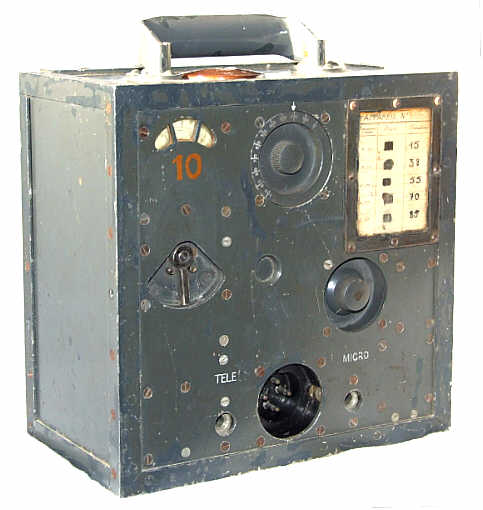
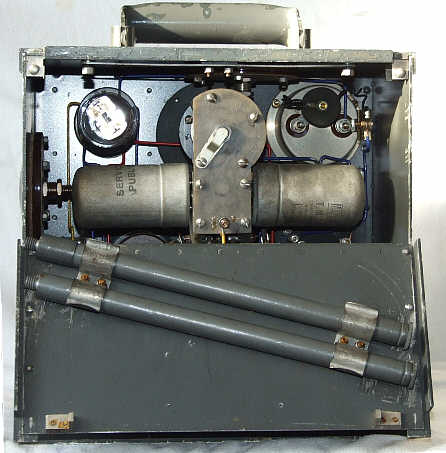
Pictured: In use on a mountain and by French troops.
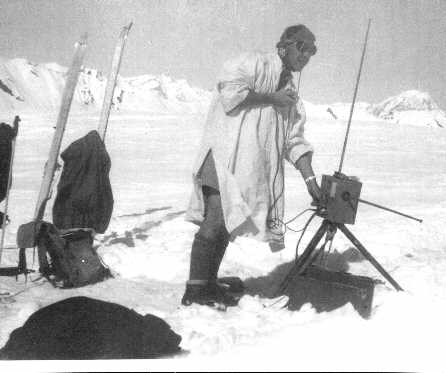
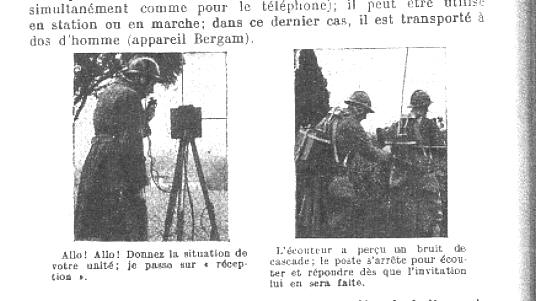
SADIR R-87
A war time set, the French S.A.D.I.R. R87 VHF receiver used for direction finding and similar roles.
There were 5 models under the R-87. These models cover with 68 to 180 MHz. They comprise 11 tubes; of which: 4 X 954,1 X 955, the others are more traditional. Type 2 is used in direction finding, 97 to 168 MHz. Receives AM, FM with narrow band with an very nice reducing gear tuning. 4 types of R87 (C, D, E, F). type C: 4.5 to 8 Mtrs, type D: 8 to 12 Mtrs, type E: 2.5 to 4.5 Mtrs, type F: 5 to 8.35 Mtrs. The circuit diagrams are identical, only windings change. the tubes used are: 4 X 954, 1 X 955, 3 X 6K7, 1 x 6L7, 1 x 6Q7, 1 x EL3.
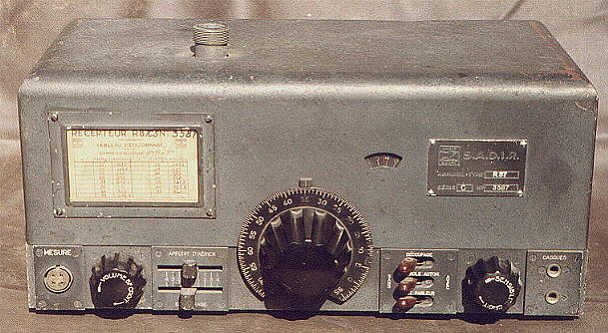
Some sets designed by Bronzavia and made by SARAM.
SARAM 5-21
Recent addition, SARAM 5-21 rx/tx. Still awaiting info on this set, more later. (see latest below)
It turned out to be a little bigger than expected so I will need a bigger table !!
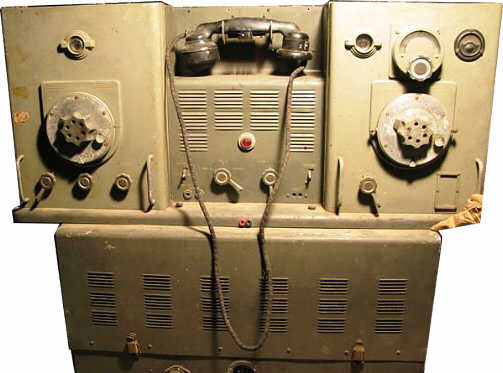
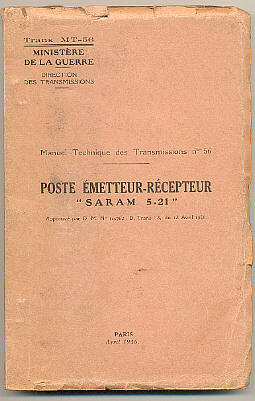
Update: 11/11/10 from my French Agent 'Dominique' :
-frequency:3 to 6 MHz for Tx and Rx, continuous coverage; 5 mechanically preset frequencies possible. Zero beat possible to tune the Tx on the Rx frequency .
-A1,A2,A3 modes; 40W RF.
-range (A3): 100km (fixed station);25 km (mobile, on move)
-antennas: long wire or whip (3m).
-Power supply : AC,50Hz,110 to 240V;350VA. PSU outputs: +1200V;+400V;-200V ;-24V for Tx. +250V for Rx.
-DC PSU: 24V , with rotary converters.
The 5-21 as the 5-20 or the 5-22 (this had a frequency meter installed in the middle part) are "brother" equipment designed at end of war,
(not sure they were known by the Germans) and manufactured in the years 1945-1948 in small quantities as rebirth of our industry, using
available stocks of parts and components, with remaining industrial capabilities (a lot of factories have bee bombed). 5-21 has the
manual "Trans.MT-56" , dated April 1946 from our "Ministère de la Guerre " ie War Ministry:" Direction des Transmissions" .
As made of light alloy, and not so nice or well famed as the widely available US BC669 (SCR 543) used as an AM radiotelephone in
various military or civilian applications, they might have been scrapped quickly.
Latest: Due to excellent work by Agent 'Dominique' in France the book with full circuits etc is now at HQ. This will make restoration easier.
SARAM 3-10
(left) Another war time set, the French equiv of the British T1154, the
Saram 310 tx. Aluminium construction, similar freq range to T1154.
 |
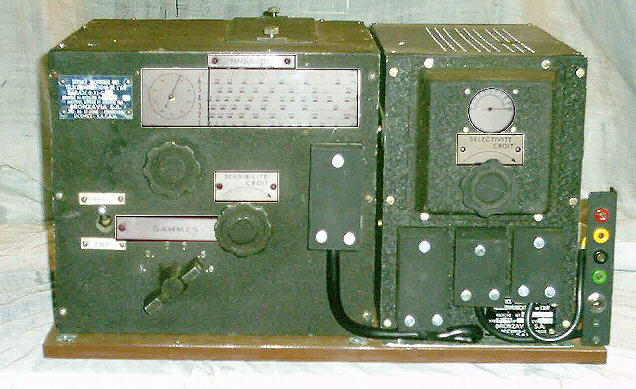 |
On line picture of 3-10 assembly.
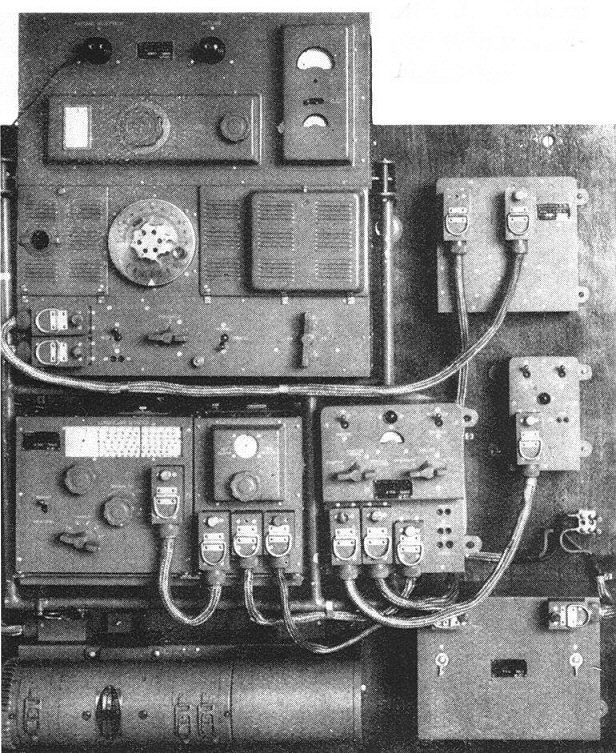
This is a nice diagram of the complete 3-10 installation I found along with an advert from an old French magazine.
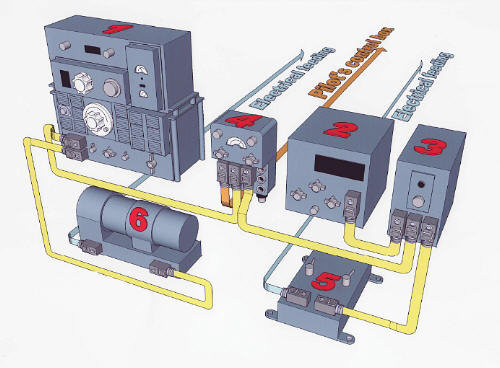
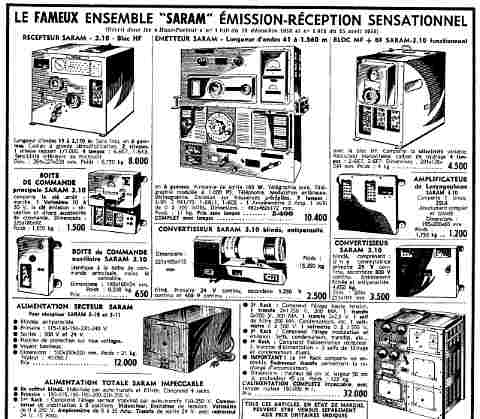
SARAM 0-12
A complete 0-12 station, transmitter, rx, generators and control boxes with cables, as it came on a mounting board and now awaiting restoration.
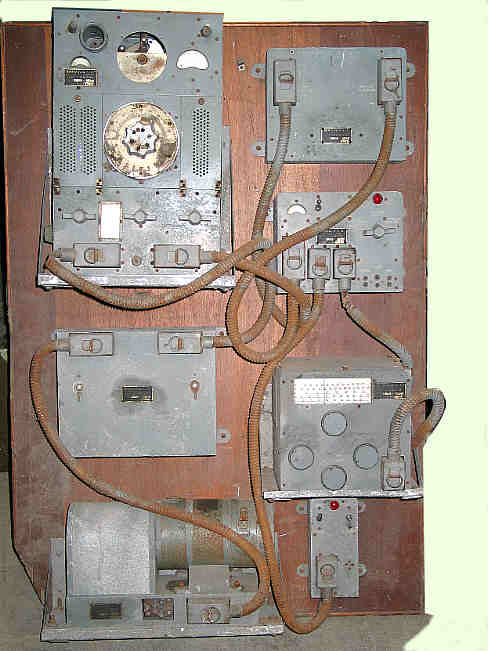
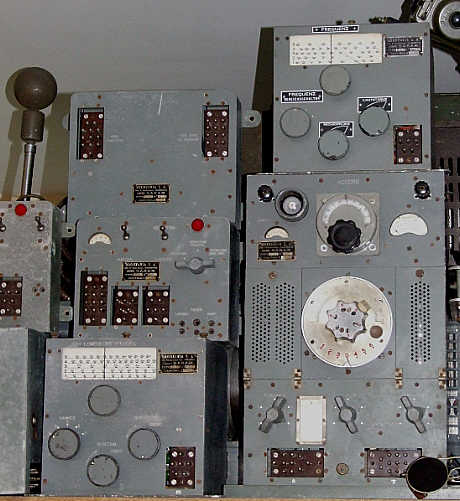
..............................................................................................................Cleaned up and awaiting remounting on a board.
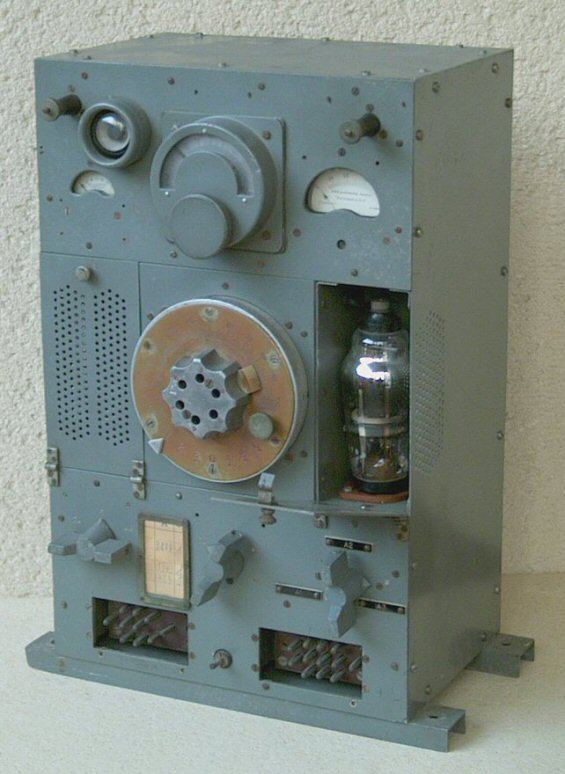
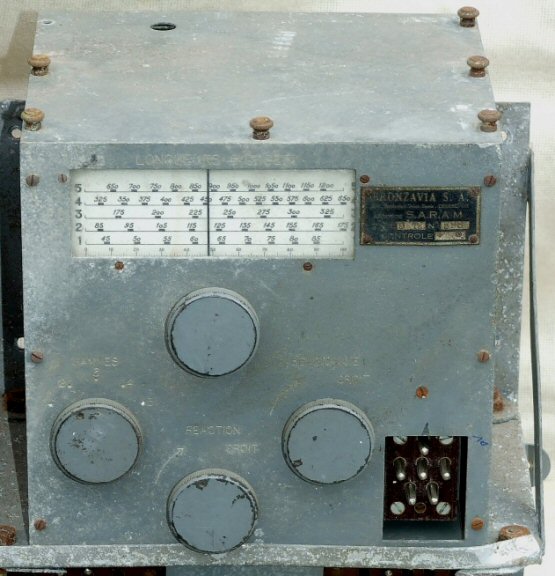
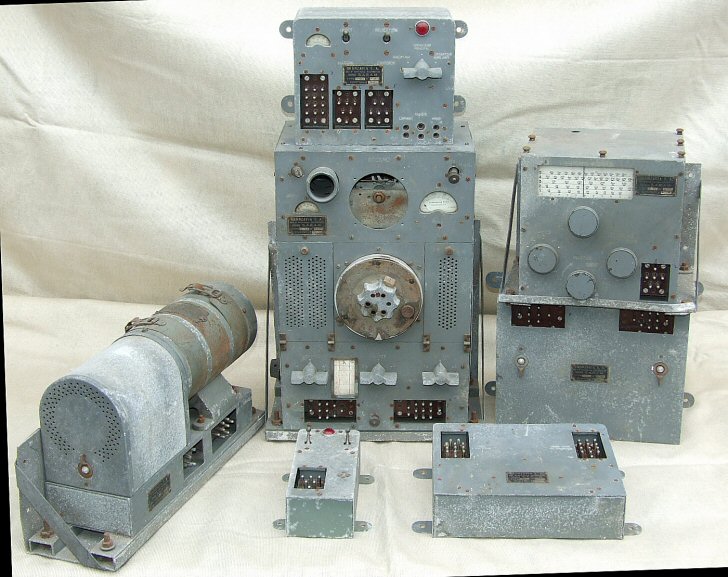
Two old original period pictures of the set now. Second one of psu installed in van.
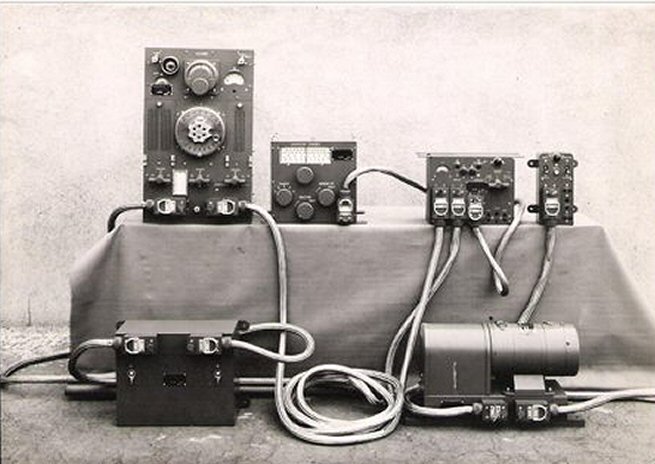
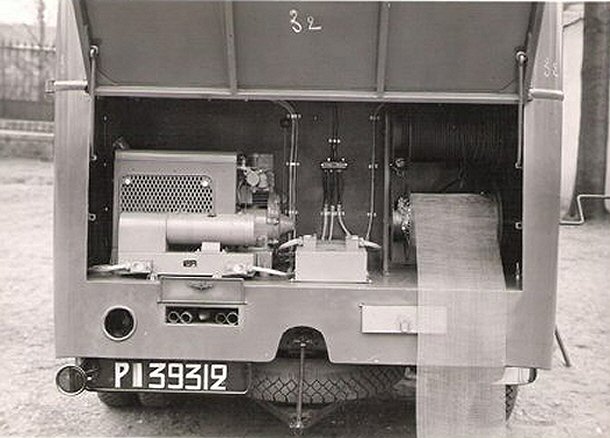
Unknown model of SARAM now, found in a 1938 magazine.
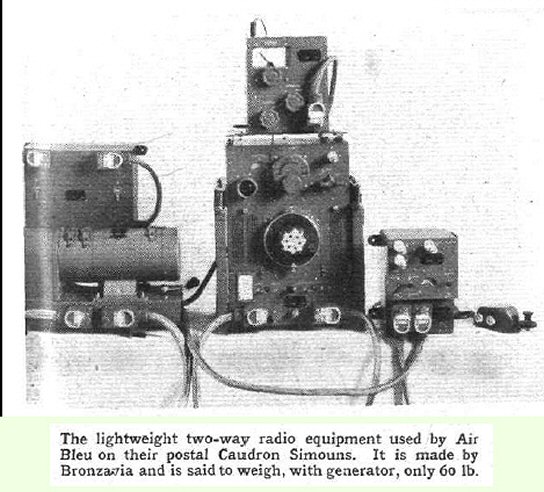
Update from my frind Dominique:
The PSUs and Tx look as the ones from 0-10. The Rx above the Tx is probably a predecessor of 0-10 Rx, with different tuning dial.
I have a reference for a Saram Rx of these days: Saram T-10, but no picture,and few datas: 6 bands (20-2000m);2 6K7,2 6F7; 2 RF
amplifiers , regenerative detection ,2 af amplifiers. Few informations have survived about these equipment which grew up after
1936 when bad noises were heard along the Rhine, with at least about 10 "modern" equipment were studied by 3 or 4 companies:
Saram, Radio-Industrie, SFR,......, tried and often beginning to be produced when we were visited ; visitors often re-used them later....
Slightly more modern sets now...
TAL 6 transmitter
This apparatus which was developed (by the Electronic co. Appliquée' ') primarily for the Algerian conflict and is extremely rare to find. This transmitter was intended to automatically send an alarm signal in the event of attack of the homestead where it was installed. If the home or settlement came under attack the role of the operator was to give the alarm, starting the transmitter by activating the switch 'ALERTE'. An identifying code of three letters, this example was 'GIJ' is then sent automatically. The set could be used with the receiver type A.A.L.6. The operator, if it wishes it, can stop the automatic sending and emit in Morse code thanks to a small built in keying switch. The majority of these radios were destroyed on the spot at the time of the withdrawl of the French troops. Only two tubes are used, 3A5 and EL84.
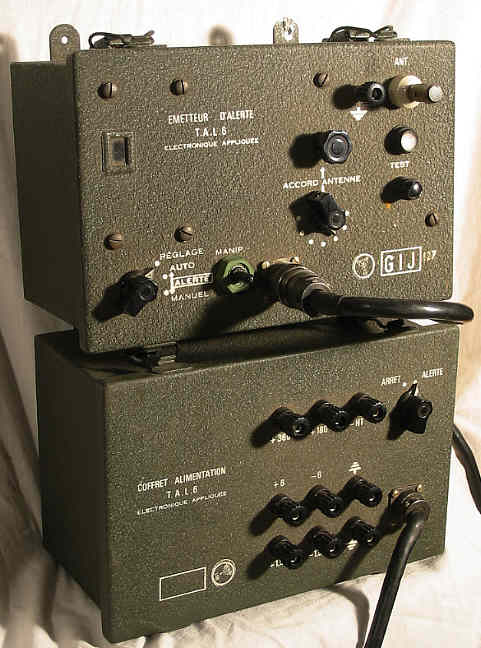
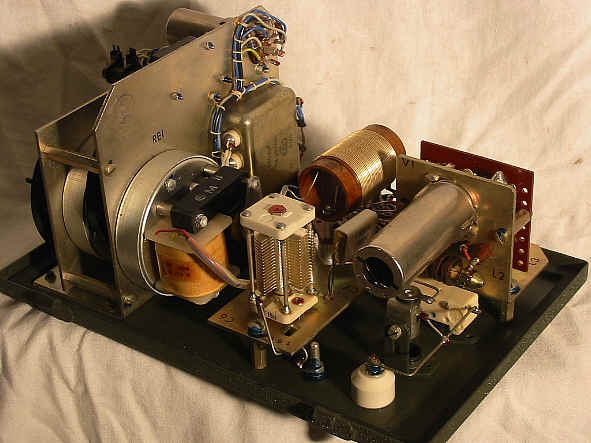
ER-247A UHF
This is the ER-247A UHF Air Band transceiver, 200 to 399.975MHz, AM, and the tube like thing on the left is the antenna.
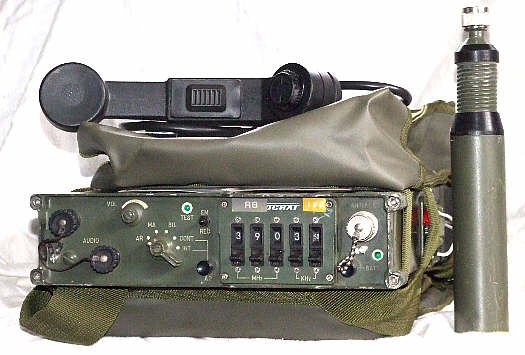
TRC-552 transceiverr, 26 to 76 MHz, ideal for 10, 6 and 4Mtr FM.
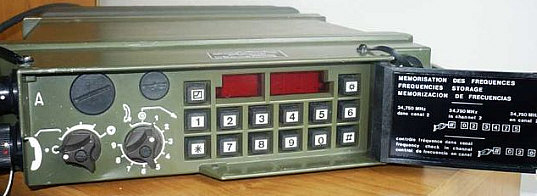
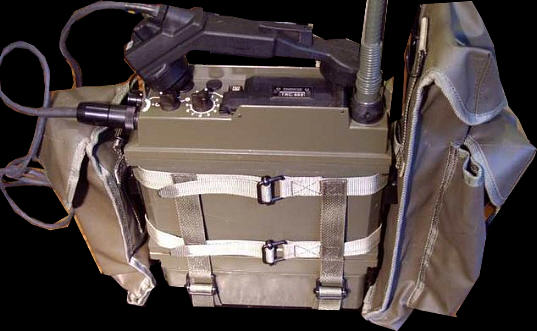
TRC-300/4
This is the Thomson CSF TRC-300/4 transceiver, similar to the British PRC320 series, this one though has an automatic atu section, move frequency more than 10 Khz and the atu resets.

TRC 300-2, TRC 300-3, TRC 300-4. Built by Thompson-CSF, the TRC-302, or more accurately, the TRC-300-2, entered service in 1972. If compared with U.S. PRC-74 it would smaller size, greater frequency coverage, better ergonomic design, and operational mode flexibility. The TRC-302 is an HF all mode backpack set. It's controls are all arranged down one side of the radio as is common in European designs. Features include lightweight waterproof aluminium alloy case, usability by unskilled operators, COS/MOS synthesiser design with extreme stability, and maximised use of integrated circuits and other solid state devices, with no mechanical relays. Ancillary equipment allow it's use as a vehicular or semi-fixed station with power levels up to 100 watts. Ops 2-30mc, in 1kc steps ( some models 100cps steps, and pre-set channel ability ). RF power output is rated 20watts High, and 6 watts Low, from a 14.5 volt 4 amp hour Nicad battery. Modes include USB, LSB, CW, AME. The TRC300 consists of 3 units, transceiver body, automatic ATU, and Battery unit 4Ahr (14VDC). The battery unit is readily detachable and includes internal charger to enable operation / charging from 10 - 30VDC. Modes J3E USB/LSB. H3E R/Ton TX / A3E on RX. J2A on CW R/T.
THC-471B
New addition to the collection. This is the Thomson THC-471B hf transceiver, 3-16Mhz CW/SSB. Sitting next to it is one of thr Banana type 50 Mhz wakli-taklies, similar to PRC-6.
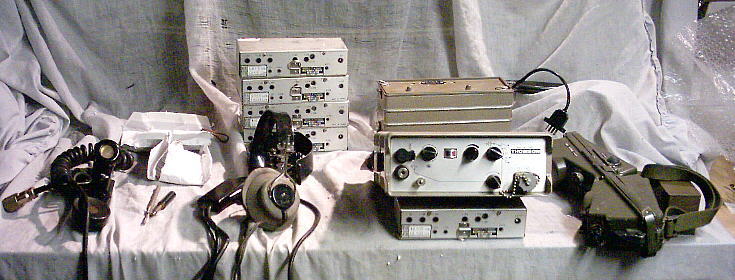
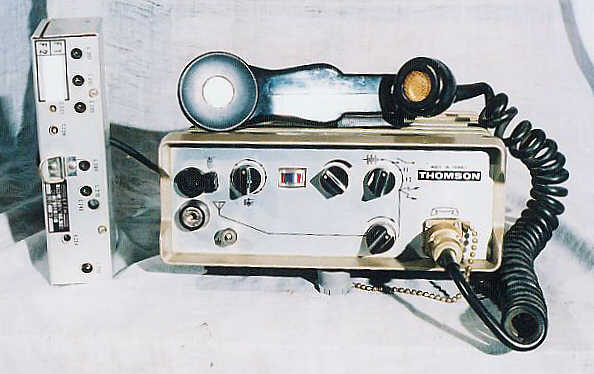
ER-504D
Another French set, post war this time, units left to right, mod, tx, rx.
4 Chanel set, used by Police during the late 50's. (The rat by the way is called REG and is now a
famous rat having appeared in Practical Wireless)
 |
 |
CSF RS-560
(left) Another set, again post war, the RS560 by CSF, 1 to 30 Mhz, in 1 Mhz bands, fully fitted, filters, all sorts of
fancy gadgets. Silver in colour.Nice HF synthetized frequency HF receiver made by the CSF French company for the Navy in the 60's.
Coverage: AM/CW/USB/LSB
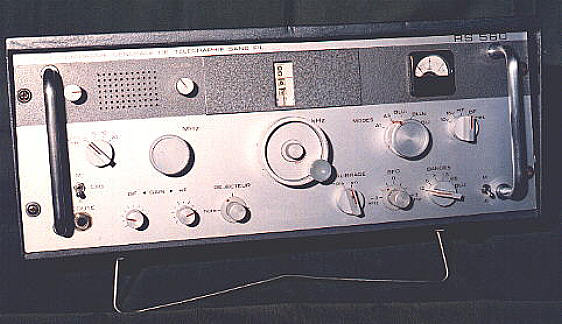
RA1-UC Aircraft RX
LEFT: The French version of the US RA-1 hf aircraft receiver.
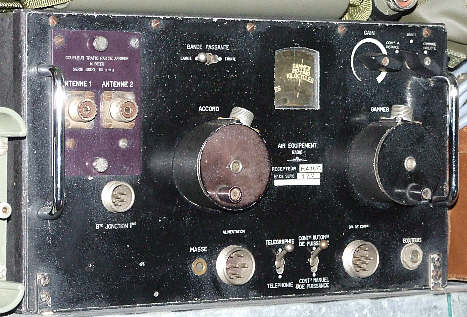 |
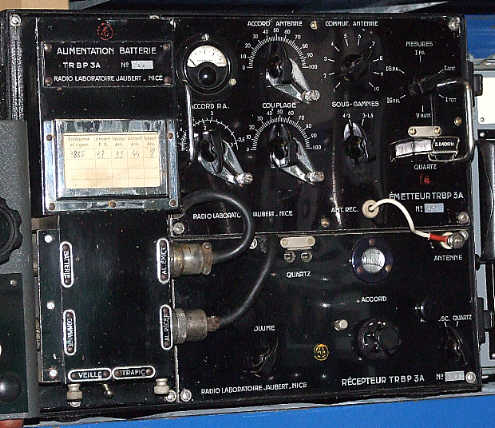 |
TRBP-3A RX/TX
R-30 RX
(left) French receiver, R30, hf.
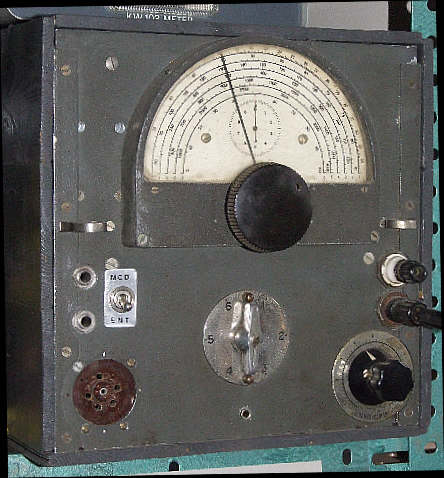 |
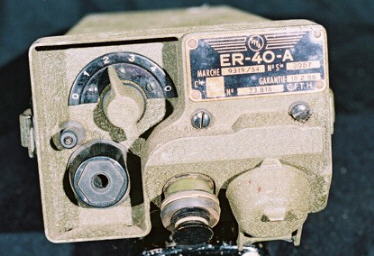 |
ER-40A
(right) The ER-40A, French version of the British WS88, (though there is an earlier ER40) low band VHF.
A French field phone now, believed to be WW1 ? if anyone can shed light on it I'd be most obliged.
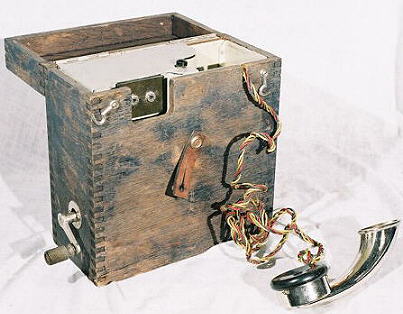
Merci pour visiter. Bonne chance. Vous voir bientôt.
If you have any comments send an e-mail to: Ben Nock, G4BXD
(If link does not work on your PC then send email to: [email protected] )
********* Pictures by G4BXD are G4BXD copyright ********